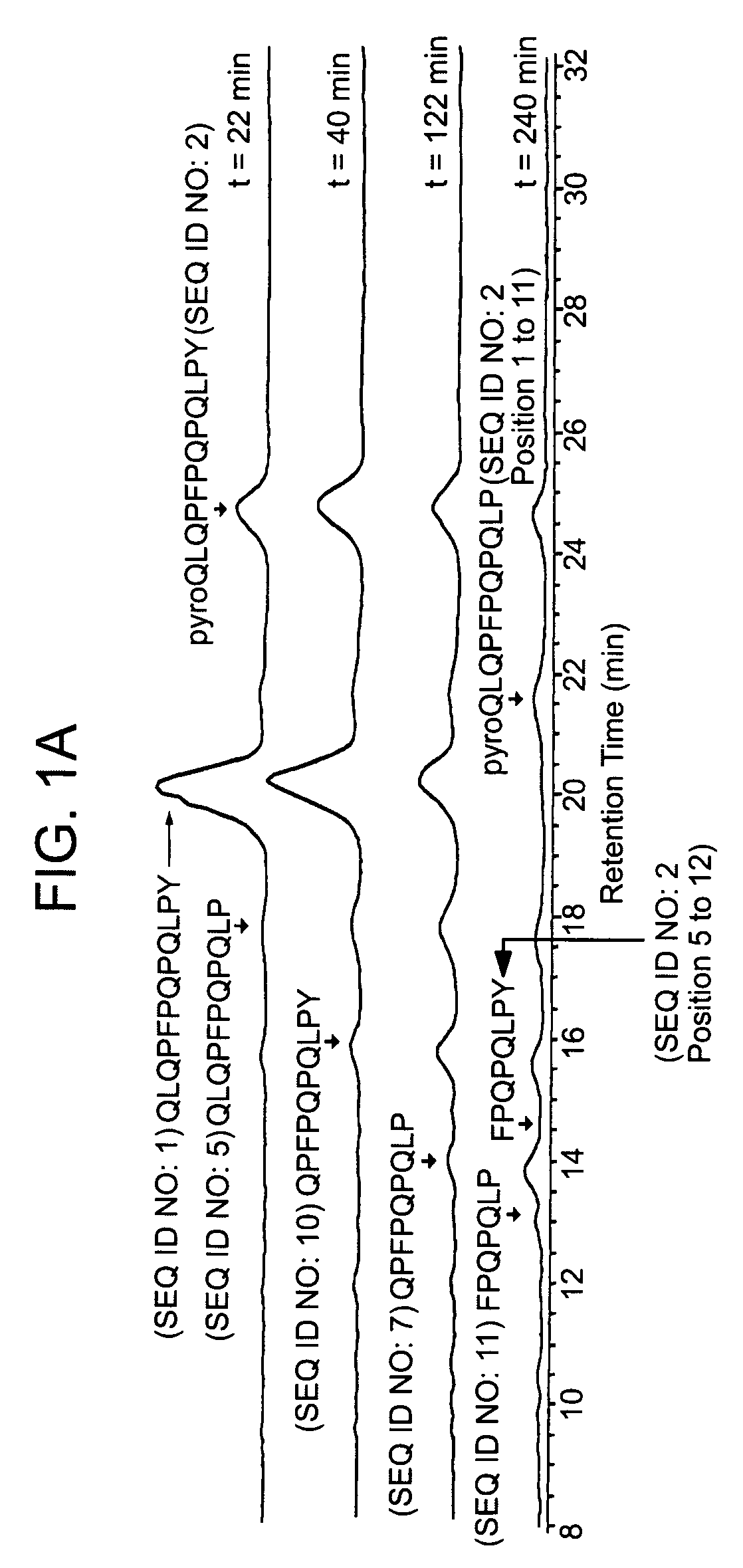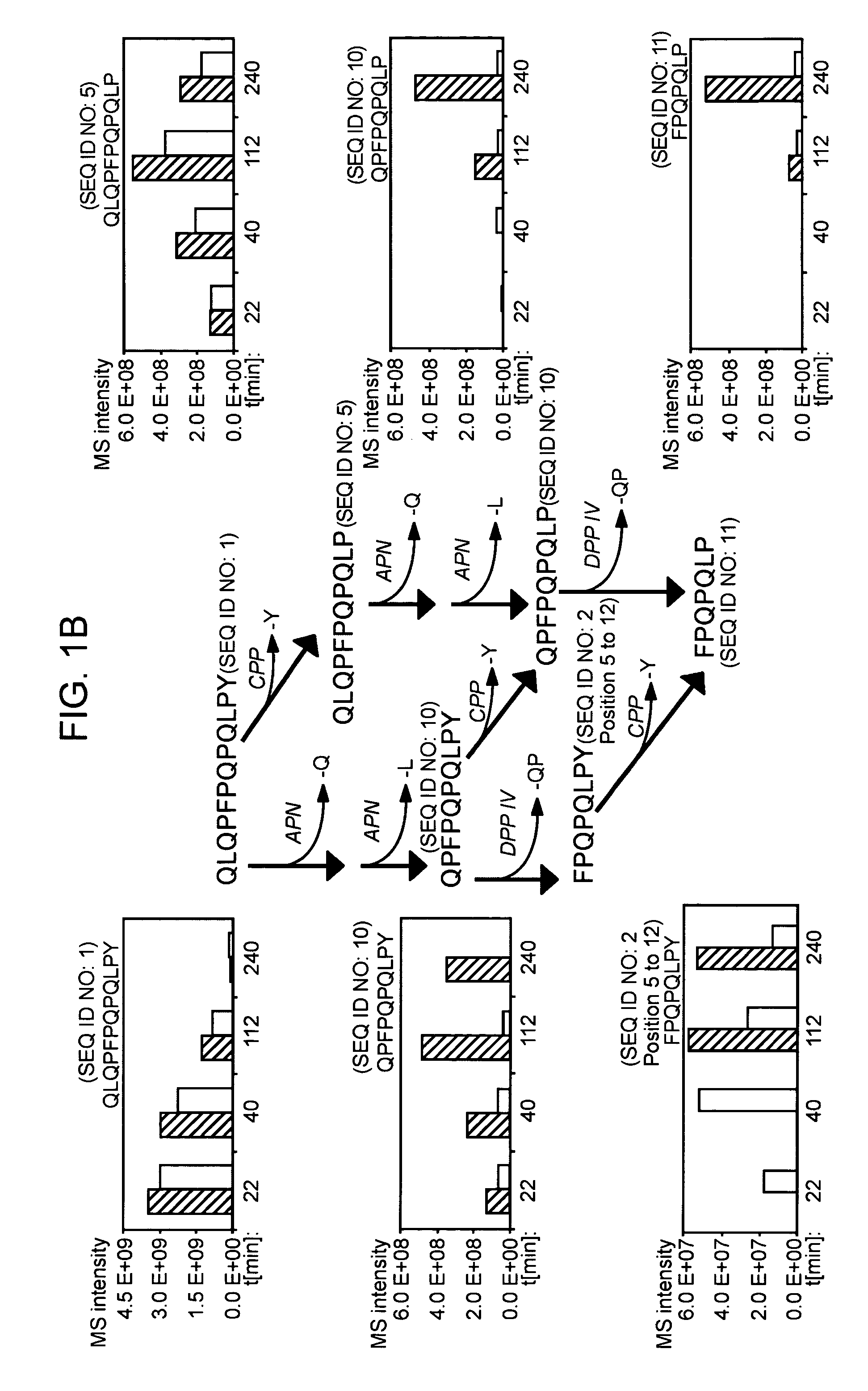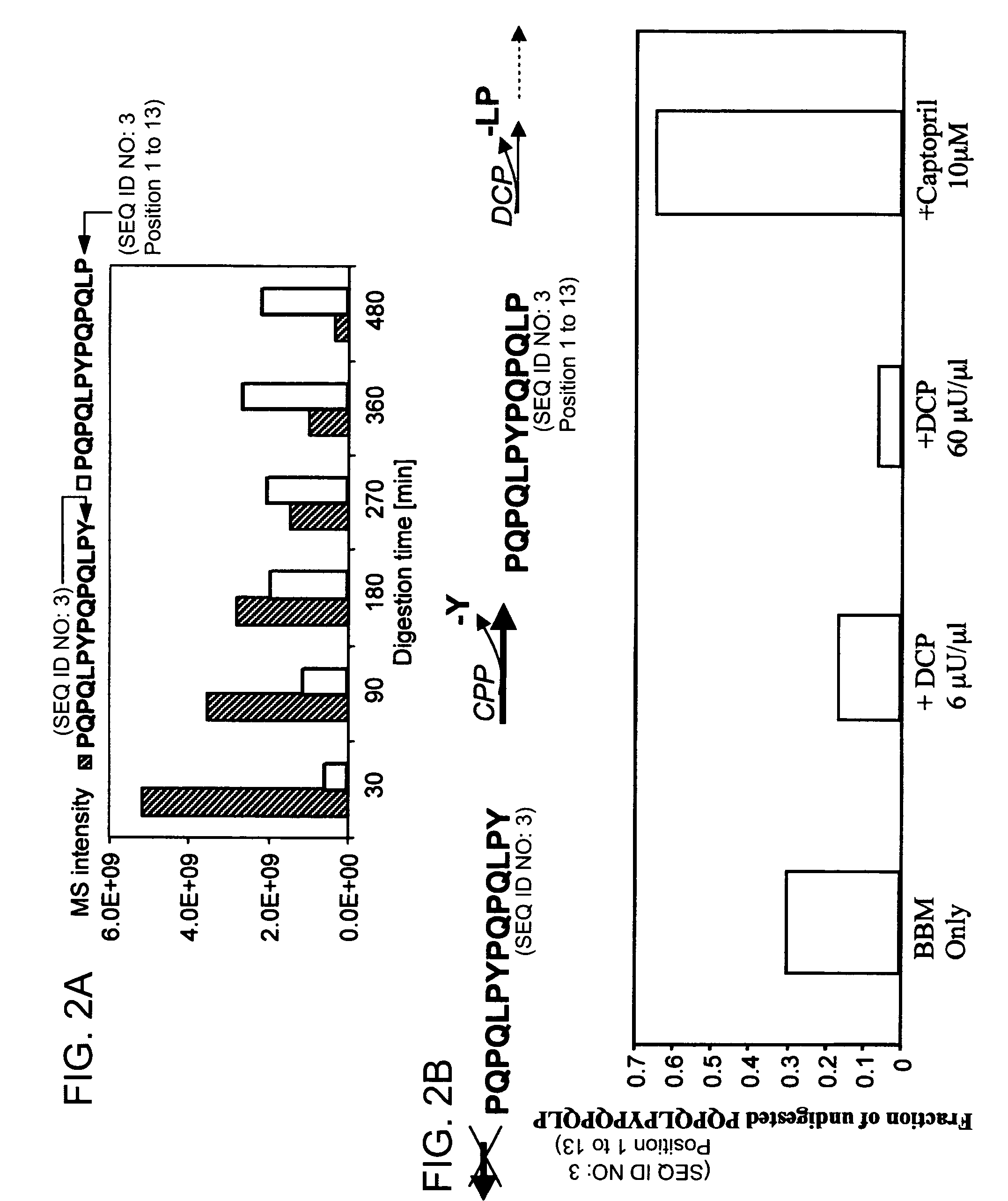Enzyme treatment of foodstuffs for Celiac Sprue
a technology for celiac sprue and food enzymes, which is applied in the field of enzyme treatment of foodstuffs for celiac sprue, can solve the problems of no good treatment for eczema, few patients respond poorly or not at all, and the toxic levels of gluten oligopeptides are reduced, so as to prevent or relieve the toxic effects of gluten oligopeptides, the effect of increasing the level of peptidases
- Summary
- Abstract
- Description
- Claims
- Application Information
AI Technical Summary
Benefits of technology
Problems solved by technology
Method used
Image
Examples
example 1
Detection of Immunodominant Peptides from Gliadin and Enzymes that Degrade Them
[0083]The following examples describe the discovery and characterization of a small number of immunodominant peptides from gliadin, which account for most of the stimulatory activity of dietary gluten on intestinal and peripheral T lymphocytes found in Celiac Sprue patients. The proteolytic kinetics of these immunodominant peptides were analyzed at the small intestinal surface. Brush border membrane vesicles from adult rat intestines were used to show that these proline-glutamine-rich peptides are exceptionally resistant to enzymatic processing, and that dipeptidyl peptidase IV and dipeptidyl carboxypeptidase are the rate-limiting enzymes in their digestion. Supplementation of the brush border membrane with trace quantities of a bacterial prolyl endopeptidase leads to rapid destruction of these gliadin peptides. These results provide the basis for enzyme-mediated therapies for treating food for provision ...
example 2
Further Characterization of Immunodominant Gliadin Peptides and Means for Their Digestion
[0099]It has long been known that the principal toxic components of wheat gluten are a family of closely related Pro-Gln rich proteins called gliadins. Peptides from a short segment of α-gliadin appear to account for most of the gluten-specific recognition by CD4+ T cells from Celiac Sprue patients. These peptides are substrates of tissue transglutaminase (tTGase), the primary auto-antigen in Celiac Sprue, and the products of this enzymatic reaction bind to the class II HLA DQ2 molecule. This example describes a combination of in vitro and in vivo animal and human studies used to characterize this “immunodominant” region of α-gliadin as part of an unusually long proteolytic product generated by the digestive process that: (a) is exceptionally resistant to further breakdown by gastric, pancreatic and intestinal brush border proteases; (b) is the highest specificity substrate of human tissue trans...
example 3
Peptidase Supplementation as Therapy for Celiac Sprue—Demonstration of Efficacy and Safety in Rats and Humans In Vivo
[0113]As described above, Celiac Sprue is a disease engendered by the gliadin peptides in wheat, rye, or barley that interact with the small intestine to produce a cascade of events leading to the destruction of intestinal mucosa and consequent malabsorption of nutrients and vitamins. Gliadin peptides are highly resistant to digestion by gastric, and pancreatic proteases as well as by the integral peptidases of the intestinal brush border surface. The interaction of recombinant α-gliadin with mammalian pepsin, chymotrypsin, trypsin, and elastase has shown that a 33-residue peptide rich in glutamine(Q) and proline(P) residues ((SEQ ID NO:12) LQLQPFPQPQLPYPQPQLPYPQPQLPYPQPQPF) is a major final digestion product. When this 33-mer is exposed to intact rat small intestine or to human intestinal brush border membranes, it is impervious to additional breakdown. This peptide ...
PUM
| Property | Measurement | Unit |
|---|---|---|
| pH | aaaaa | aaaaa |
| pH | aaaaa | aaaaa |
| concentration | aaaaa | aaaaa |
Abstract
Description
Claims
Application Information
 Login to View More
Login to View More - R&D
- Intellectual Property
- Life Sciences
- Materials
- Tech Scout
- Unparalleled Data Quality
- Higher Quality Content
- 60% Fewer Hallucinations
Browse by: Latest US Patents, China's latest patents, Technical Efficacy Thesaurus, Application Domain, Technology Topic, Popular Technical Reports.
© 2025 PatSnap. All rights reserved.Legal|Privacy policy|Modern Slavery Act Transparency Statement|Sitemap|About US| Contact US: help@patsnap.com



